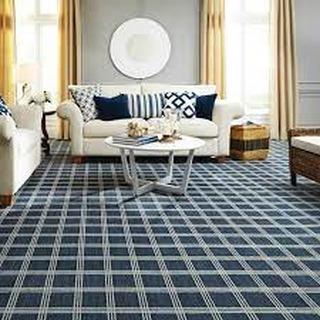Wall-to-wall carpets are a popular choice for flooring in many homes and commercial spaces. They provide comfort, insulation, and enhance the overall aesthetics of a room. While we may be familiar with the basics of wall-to-wall carpets, there are some interesting facts that you may not know. In this article, we will explore some intriguing facts about wall-to-wall carpets that will broaden your knowledge and appreciation for this versatile flooring option.
1. Ancient Origins
The concept of carpets dates back thousands of years. The earliest evidence of carpets can be traced back to ancient civilizations such as Persia, Egypt, and China. These early carpets were handwoven using various materials like wool, silk, and animal hides.
2. Influence of Nomadic Cultures
Nomadic cultures, such as the Persians and Mongols, played a significant role in the development and spread of carpet weaving. The nomads used carpets as portable flooring and insulation in their tents, showcasing the practicality and versatility of carpets.
3. Royal Patronage
Carpets were highly valued by royalty and the elite throughout history. In medieval Europe, carpets were considered luxury items and often displayed as a sign of wealth and prestige. Elaborate carpets adorned the floors of palaces and castles, showcasing intricate designs and craftsmanship.
4. Industrial Revolution and Mass Production
The industrial revolution in the 18th century brought significant advancements in carpet production. The invention of power looms and mechanized processes revolutionized the carpet industry, enabling mass production and making carpets more accessible to the general population.
5. Wall-to-Wall Carpeting Emerges
Wall-to-wall carpeting as we know it today emerged in the early 20th century. With the availability of wider looms, carpets could be produced in large rolls to cover entire rooms seamlessly. This innovation marked a shift from individual carpet rugs to wall-to-wall carpeting that covered the entire floor surface.
6. Broad Range of Materials
Wall-to-wall carpets are made from a wide range of materials to suit different preferences and requirements. Common materials include nylon, polyester, wool, and olefin. Each material has its unique characteristics, such as durability, stain resistance, and comfort.
7. Countless Design Options
Wall-to-wall carpets offer an extensive variety of design options to suit different interior styles and personal preferences. From solid colors to intricate patterns, there is a carpet design to complement any aesthetic vision. Some carpets even mimic the appearance of natural materials like wood or stone.
8. Acoustic Benefits
One often overlooked advantage of wall-to-wall carpets is their acoustic properties. Carpets absorb sound waves, reducing noise transmission between floors and rooms. This makes them an excellent choice for spaces where noise reduction is desired, such as bedrooms, offices, and entertainment rooms.
9. Insulation and Energy Efficiency
Wall-to-wall carpets provide insulation and contribute to energy efficiency. They act as an extra layer of insulation, keeping rooms warmer in the winter and cooler in the summer. This can help reduce energy consumption and heating/cooling costs.
10. Maintenance and Cleaning
Proper maintenance and regular cleaning are essential for the longevity and appearance of wall-to-wall carpets. Vacuuming regularly, addressing spills promptly, and scheduling professional deep cleaning can help keep carpets in optimal condition.
11. Allergen Considerations
Contrary to popular belief, wall-to-wall carpets can be suitable for individuals with allergies. Regular vacuuming and proper maintenance can minimize allergens, and carpets can even trap airborne particles, reducing their circulation in the air.
12. Enhancing Safety
Wall-to-wall carpets can improve safety by providing a softer surface in case of falls or accidents. This is particularly beneficial for households with young children or elderly individuals who may be more prone to accidents.
13. Versatile Application
Wall-to-wall carpets are not limited to residential spaces. They are widely used in commercial settings, such as offices, hotels, and retail stores. Carpets in commercial spaces offer comfort, noise reduction, and can contribute to the overall aesthetics and branding of the business.
14. Creative Rug Alternatives
If you're not ready for full wall-to-wall carpeting, you can get creative with rug alternatives. Carpet tiles and area rugs allow for more flexibility in design and can be easily replaced or rearranged to update the look of a room.
15. Endless Possibilities
The versatility of wall-to-wall carpets Dubai is truly limitless. From creating a cozy bedroom retreat to designing a luxurious office space, wall-to-wall carpets provide endless possibilities for transforming any room into a comfortable and inviting space.
Now armed with these interesting facts about wall-to-wall carpets, you can appreciate the rich history, versatility, and practicality of this flooring option. Whether you're considering carpeting for your home or commercial space, wall-to-wall carpets offer a wide range of benefits that go beyond their visual appeal.
